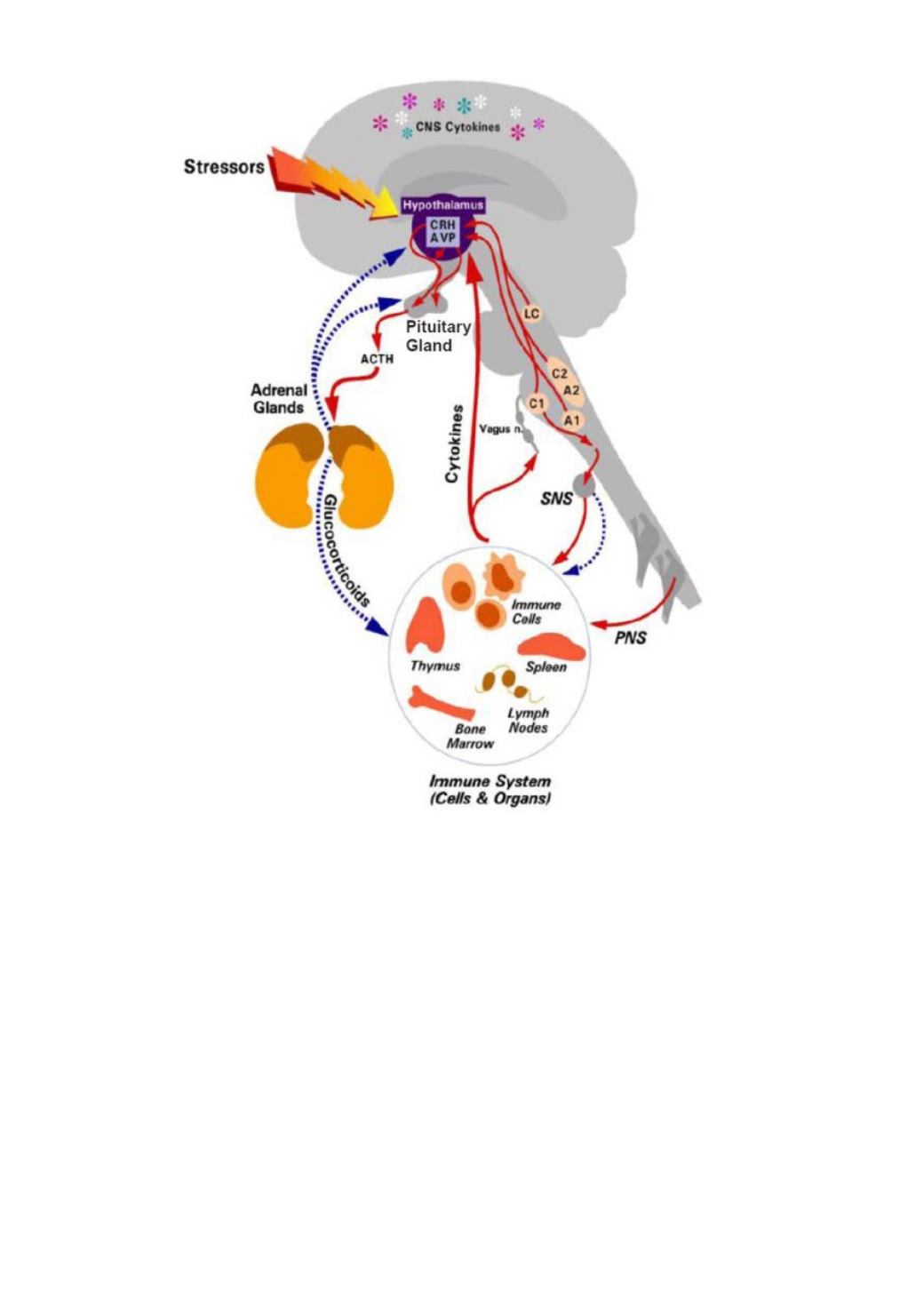
Communication between the brain, endocrine systems and immune system
. The hypothalamic-pituitary
adrenal (HPA) axis is an essential system in the body’s response to stress. Upon challenge with a stressor,
higher brain areas including the prefrontal cortex and hippocampus elicit increased activation within the
paraventricular nucleus of the hypothalamus. In turn, neurons located within the hypothalamus release
corticotropin-releasing hormone (CRH) and arginine vasopressin (AVP) into the portal vein circulation that
connects the pituitary gland to the brain. These neurohormones subsequently induce the release of
adrenocorticotropin hormone (ACTH) from the anterior pituitary into the general circulation. ACTH eventually
reaches the adrenal gland, which causes the production and release of glucocorticoids including cortisol.
Stressor exposure also influences select brain stem nuclei, which in turn modulate autonomic outflow.
Considerable evidence indicates that both the HPA axis and autonomic nervous system (including
sympathetic [SNS] and parasympathetic [PNS] branches) exert powerful effects on the immune system,
including inflammatory/innate immune function. Immune system cytokines have been shown to potently affect
the brain. For example, cytokines in the context of inflammatory excess are known to play an important role in
the development of a number of psychiatric illnesses, including major depression. (Reprinted with permission
from Webster, J. I., Tonelli, L., & Sternberg, E. M. (2002). Neuroendocrine regulation of immunity. Annual
Review of Immunology, 20, 125–163. Copyright 2002 Annual Reviews.)
243
Figure 2.


